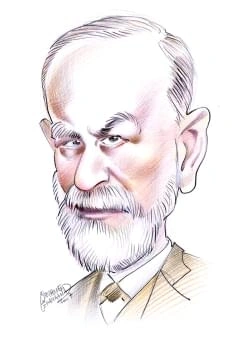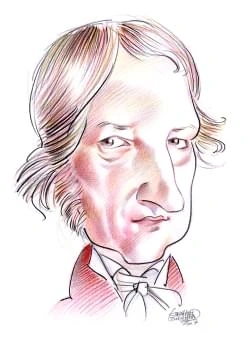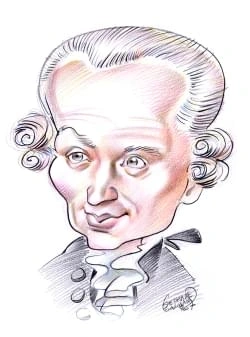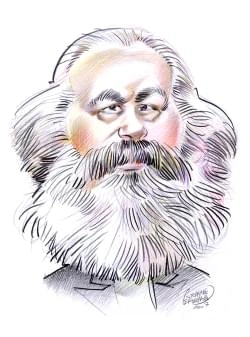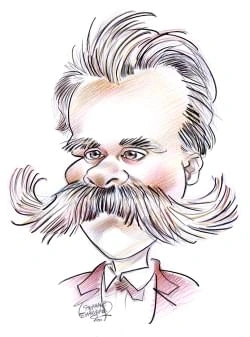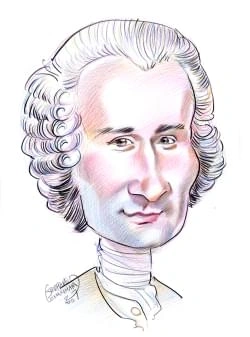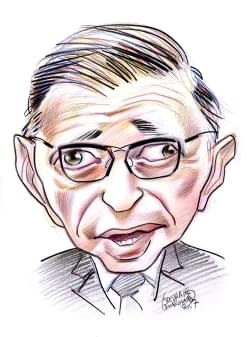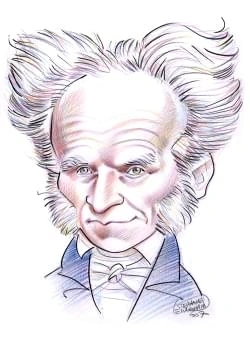233 résultats pour "forestry"
-
Tanzania Facts and Figures.
HEALTH AND EDUCATIONLife expectancy Total 51.5 years (2008 estimate) Female 52.9 years (2008 estimate) Male 50.1 years (2008 estimate) Infant mortality rate 71 deaths per 1,000 live births (2008 estimate) Population per physician 44,133 people (2004) Population per hospital bed 1,123 people (1992) Literacy rateTotal 80.2 percent (2005 estimate) Female 73.4 percent (2005 estimate) Male 87.2 percent (2005 estimate) Education expenditure as a share of gross national product (GNP)...
-
The Netherlands Facts and Figures.
HEALTH AND EDUCATIONLife expectancy Total 79.2 years (2008 estimate) Female 82 years (2008 estimate) Male 76.7 years (2008 estimate) Infant mortality rate 5 deaths per 1,000 live births (2008 estimate) Population per physician 304 people (2004) Population per hospital bed 213 people (2001) Literacy rateTotal 99 percent (1995) Female Not available Male Not available Education expenditure as a share of gross national product (GNP) 5.2 percent (2002-2003) Number of years of comp...
-
Thailand Facts and Figures.
HEALTH AND EDUCATIONLife expectancy Total 72.8 years (2008 estimate) Female 75.3 years (2008 estimate) Male 70.5 years (2008 estimate) Infant mortality rate 18 deaths per 1,000 live births (2008 estimate) Population per physician 3,324 people (2004) Population per hospital bed 455 people (1999) Literacy rateTotal 96.4 percent (2005 estimate) Female 95.1 percent (2005 estimate) Male 97.7 percent (2005 estimate) Education expenditure as a share of gross national product (GNP) 5....
-
Colombia Facts and Figures.
Other 1 percent HEALTH AND EDUCATIONLife expectancy Total 72.5 years (2008 estimate) Female 76.5 years (2008 estimate) Male 68.7 years (2008 estimate) Infant mortality rate 20 deaths per 1,000 live births (2008 estimate) Population per physician 741 people (2004) Population per hospital bed 909 people (2003) Literacy rateTotal 93 percent (2005 estimate) Female 93.1 percent (2005 estimate) Male 92.9 percent (2005 estimate) Education expenditure as a share of gross national p...
-
New Zealand Facts and Figures.
Other (including Jewish and Hindu) 28 percent HEALTH AND EDUCATIONLife expectancy Total 79.1 years (2008 estimate) Female 82.2 years (2008 estimate) Male 76.1 years (2008 estimate) Infant mortality rate 6 deaths per 1,000 live births (2008 estimate) Population per physician 449 people (2004) Population per hospital bed 164 people (2002) Literacy rateTotal 99 percent (1995) Female Not available Male Not available Education expenditure as a share of gross national product (GN...
-
Australia Facts and Figures.
HEALTH AND EDUCATIONLife expectancy Total 80.7 years (2008 estimate) Female 83.8 years (2008 estimate) Male 77.9 years (2008 estimate) Infant mortality rate 5 deaths per 1,000 live births (2008 estimate) Population per physician 401 people (2004) Population per hospital bed 135 people (2002) Literacy rateTotal 100 percent (1995) Female Not available Male Not available Education expenditure as a share of gross national product (GNP) 5 percent (2002-2003) Number of years of com...
-
Mexico Facts and Figures.
HEALTH AND EDUCATIONLife expectancy Total 75.8 years (2008 estimate) Female 78.8 years (2008 estimate) Male 73 years (2008 estimate) Infant mortality rate 19 deaths per 1,000 live births (2008 estimate) Population per physician 583 people (2004) Population per hospital bed 1,000 people (2003) Literacy rateTotal 92.7 percent (2005 estimate) Female 91.2 percent (2005 estimate) Male 94.4 percent (2005 estimate) Education expenditure as a share of gross national product (GNP) 5.4...
-
Germany Facts and Figures.
Nonreligious 17 percent Other 7 percent HEALTH AND EDUCATIONLife expectancy Total 79.1 years (2008 estimate) Female 82.3 years (2008 estimate) Male 76.1 years (2008 estimate) Infant mortality rate 4 deaths per 1,000 live births (2008 estimate) Population per physician 291 people (2006) Population per hospital bed 112 people (2002) Literacy rateTotal 99 percent (1995) Female Not available Male Not available Education expenditure as a share of gross national product (GNP) 4...
-
-
Belgium Facts and Figures.
Muslims 4 percent Nonreligious 6 percent Other 8 percent HEALTH AND EDUCATIONLife expectancy Total 79.1 years (2008 estimate) Female 82.4 years (2008 estimate) Male 75.9 years (2008 estimate) Infant mortality rate 5 deaths per 1,000 live births (2008 estimate) Population per physician 236 people (2006) Population per hospital bed 145 people (2002) Literacy rateTotal 99 percent (1995) Female Not available Male Not available Education expenditure as a share of gross natio...
-
United States Facts and Figures.
HEALTH AND EDUCATIONLife expectancy Total 78.1 years (2008 estimate) Female 81.1 years (2008 estimate) Male 75.3 years (2008 estimate) Infant mortality rate 6 deaths per 1,000 live births (2008 estimate) Population per physician 375 people (2005) Population per hospital bed 370 people (2005) Literacy rateTotal 99.5 percent (1995) Female Not available Male Not available Education expenditure as a share of gross national product (GNP) 4.9 percent (2000-2001) Number of years of...
-
Chile Facts and Figures.
Other 10 percent HEALTH AND EDUCATIONLife expectancy Total 77.2 years (2008 estimate) Female 80.6 years (2008 estimate) Male 73.9 years (2008 estimate) Infant mortality rate 8 deaths per 1,000 live births (2008 estimate) Population per physician 916 people (2004) Population per hospital bed 385 people (2002) Literacy rateTotal 96.5 percent (2005 estimate) Female 96.4 percent (2005 estimate) Male 96.6 percent (2005 estimate) Education expenditure as a share of gross national...
-
Spain Facts and Figures.
Other 3 percent HEALTH AND EDUCATIONLife expectancy Total 79.9 years (2008 estimate) Female 83.5 years (2008 estimate) Male 76.6 years (2008 estimate) Infant mortality rate 4 deaths per 1,000 live births (2008 estimate) Population per physician 313 people (2004) Population per hospital bed 263 people (2003) Literacy rateTotal 98.1 percent (2005 estimate) Female 97.4 percent (2005 estimate) Male 98.8 percent (2005 estimate) Education expenditure as a share of gross national...
-
Austria Facts and Figures.
HEALTH AND EDUCATIONLife expectancy Total 79.4 years (2008 estimate) Female 82.4 years (2008 estimate) Male 76.5 years (2008 estimate) Infant mortality rate 5 deaths per 1,000 live births (2008 estimate) Population per physician 273 people (2006) Population per hospital bed 121 people (2003) Literacy rateTotal 99 percent (1995) Female Not available Male Not available Education expenditure as a share of gross national product (GNP) 5.8 percent (2002-2003) Number of years of co...
-
Malaysia Facts and Figures.
Other 6 percent HEALTH AND EDUCATIONLife expectancy Total 73 years (2008 estimate) Female 75.9 years (2008 estimate) Male 70.3 years (2008 estimate) Infant mortality rate 16 deaths per 1,000 live births (2008 estimate) Population per physician 1,425 people (2004) Population per hospital bed 526 people (2001) Literacy rateTotal 89.9 percent (2005 estimate) Female 86.8 percent (2005 estimate) Male 93 percent (2005 estimate) Education expenditure as a share of gross national p...
-
Brazil Facts and Figures.
HEALTH AND EDUCATIONLife expectancy Total 72.5 years (2008 estimate) Female 76.6 years (2008 estimate) Male 68.6 years (2008 estimate) Infant mortality rate 27 deaths per 1,000 live births (2008 estimate) Population per physician 486 people (2004) Population per hospital bed 370 people (2002) Literacy rateTotal 87.1 percent (2005 estimate) Female 87.5 percent (2005 estimate) Male 86.7 percent (2005 estimate) Education expenditure as a share of gross national product (GNP) 4 pe...
-
China Facts and Figures.
Other 34 percent HEALTH AND EDUCATIONLife expectancy Total 73.2 years (2008 estimate) Female 75.2 years (2008 estimate) Male 71.4 years (2008 estimate) Infant mortality rate 21 deaths per 1,000 live births (2008 estimate) Population per physician 662 people (2005) Population per hospital bed 408 people (2005) Literacy rateTotal 87.3 percent (2005 estimate) Female 80.6 percent (2005 estimate) Male 93.7 percent (2005 estimate) Education expenditure as a share of gross nationa...
-
-
Israel Facts and Figures.
HEALTH AND EDUCATIONLife expectancy Total 79.7 years (2008 estimate) Female 82 years (2008 estimate) Male 77.6 years (2008 estimate) Infant mortality rate 7 deaths per 1,000 live births (2008 estimate) Population per physician 273 people (2006) Population per hospital bed 164 people (2003) Literacy rateTotal 96 percent (2005 estimate) Female 94.4 percent (2005 estimate) Male 97.6 percent (2005 estimate) Education expenditure as a share of gross national product (GNP) 7.8 perce...
-
Pakistan Facts and Figures.
HEALTH AND EDUCATIONLife expectancy Total 64.1 years (2008 estimate) Female 65.2 years (2008 estimate) Male 63.1 years (2008 estimate) Infant mortality rate 67 deaths per 1,000 live births (2008 estimate) Population per physician 1,353 people (2004) Population per hospital bed 1,429 people (2003) Literacy rateTotal 47.4 percent (2005 estimate) Female 32.4 percent (2005 estimate) Male 61.4 percent (2005 estimate) Education expenditure as a share of gross national product (GNP)...
-
Iran Facts and Figures.
Shiite Muslim 93 percent Sunni Muslim 6 percent Zoroastrian, Jewish, Christian, and Baha'i 1 percent HEALTH AND EDUCATIONLife expectancy Total 70.9 years (2008 estimate) Female 72.4 years (2008 estimate) Male 69.4 years (2008 estimate) Infant mortality rate 37 deaths per 1,000 live births (2008 estimate) Population per physician 2,223 people (2004) Population per hospital bed 625 people (2001) Literacy rateTotal 81.3 percent (2005 estimate) Female 75.2 percent (2005 estimate...
-
Russia Facts and Figures.
Nonreligious 28 percent Other 7 percent HEALTH AND EDUCATIONLife expectancy Total 65.9 years (2008 estimate) Female 73.1 years (2008 estimate) Male 59.2 years (2008 estimate) Infant mortality rate 11 deaths per 1,000 live births (2008 estimate) Population per physician 232 people (2006) Population per hospital bed 95 people (2003) Literacy rateTotal 99.6 percent (2005 estimate) Female 99.6 percent (2005 estimate) Male 99.7 percent (2005 estimate) Education expenditure as...
-
Indonesia Facts and Figures.
Buddhist 1 percent Other 1 percent HEALTH AND EDUCATIONLife expectancy Total 70.5 years (2008 estimate) Female 73.1 years (2008 estimate) Male 68 years (2008 estimate) Infant mortality rate 31 deaths per 1,000 live births (2008 estimate) Population per physician 6,159 people (2004) Population per hospital bed 167 people (1998) Literacy rateTotal 89.5 percent (2005 estimate) Female 85.6 percent (2005 estimate) Male 93.6 percent (2005 estimate) Education expenditure as a sh...
-
Fredericton - Geography.
As a provincial center for government, forestry, military activities, and agriculture, Fredericton grew from 4400 residents in 1848 to 7117 by 1901. Telegraph lines wereestablished in 1851, telephones in 1888, and radio broadcasts in 1923. Early newspapers included the New Brunswick Reporter (1844-1902) and the Maritime Farmer (1879-1905). After 1850 Fredericton flourished as an industrial town. Sawmills, shipyards, tanneries, boot and shoe factories, carriage shops, iron foundries, brickyard...
-
Chad - country.
B Industries The processing of cotton and cottonseed oil and the manufacturing of peanut oil are major industries in Chad. Modern meatpacking plants have been established inN’Djamena and Sarh. The fishing industry furnishes fresh, dried, and smoked fish for domestic use and export. Petroleum mining and processing are increasinglyimportant industries in Chad. Gold and natron, a mineral used to make soap, glass, paper, and medicines, are also mined. Forestry is important in the south. The outputo...
-
Guyana - country.
European patterns of living. People of mixed African and European ancestry form a distinct group in Guyana, maintaining closer social ties to the European communitythan to the African Guyanese community. Asians from the Indian subcontinent began to arrive in the 19th century, following the abolition of slavery in Guyana, to work as indentured and contract laborers. Theycontinued to arrive until 1917, when Britain outlawed indentured servitude. Thousands of Indians chose to remain in Guyana after...
-
-
Central America - Geography.
F Animal Life Most of the animal life of Central America is similar to that of South America, but some animals have ties with North America. The marley and opossum have links withSouth America, as do the jaguar, ocelot, jaguarundi, and margay, which are members of the cat family. In contrast, the puma, gray fox, and coyote are of NorthAmerican origin. The armadillo, anteater, and sloth have ties to the south, deer to the north. The large manatee, an aquatic plant eater, survives in the isolated...
-
Honduras - country.
A Principal Cities The capital and largest city of Honduras is Tegucigalpa (2006 estimate, 1,324,000), located in the south-central highlands region. The country’s second largest city isSan Pedro Sula (549,498). The principal city and commercial center in the north, it lies in the heart of the vast banana plantations on the Caribbean Sea. La Ceiba(127,590) and Puerto Cortés (90,161) are among the leading Caribbean ports. B Language and Religion Spanish is the official language and is spoken by...
-
Ecuador - country.
F Natural Resources Ecuador’s main mineral wealth is in petroleum. Other mineral resources of the country include gold, silver, copper, lead, and zinc. Forests cover 38.3 percent of thecountry. G Plants and Animals Along the northern part of the Ecuador coast, and within the inner portion of the southern coast, tropical jungles abound. In some places the jungles extend up theslopes of the Andes as wet, mossy forests. Dense forests cover both flanks of the Cordilleras, as well as the Oriente, u...
-
Maine - geography.
temperatures range from 17° to 21°C (62° to 70°F) with the southern interior being the warmest and the east coast and north the coolest. However, daytime summertemperatures may reach the lower 30°s C (lower 90°s F), and temperatures in winter have fallen as low as -44°C (-48°F) in the interior. D2 Precipitation Precipitation (rainfall and snowfall) in Maine is evenly distributed throughout the year. Most areas receive from 860 to 1,020 mm (34 to 40 in) yearly, although parts ofthe coast are som...
-
Maine - USA History.
temperatures range from 17° to 21°C (62° to 70°F) with the southern interior being the warmest and the east coast and north the coolest. However, daytime summertemperatures may reach the lower 30°s C (lower 90°s F), and temperatures in winter have fallen as low as -44°C (-48°F) in the interior. D2 Precipitation Precipitation (rainfall and snowfall) in Maine is evenly distributed throughout the year. Most areas receive from 860 to 1,020 mm (34 to 40 in) yearly, although parts ofthe coast are som...
-
Rhode Island - geography.
C (73° F). Along the northern state line, the January mean temperature is about 1° C (about 2° F) colder than in Warwick in January. Along the ocean coast, theJanuary mean temperature is -1° C (30° F). Warm season temperatures are also influenced by the ocean and bay, so temperatures are usually cooler along the coastthan in the interior. The difference tends to be greatest in spring and early summer. Winter temperatures in Rhode Island are usually above -7° C (20° F), buttemperatures colder by...
-
Rhode Island - USA History.
C (73° F). Along the northern state line, the January mean temperature is about 1° C (about 2° F) colder than in Warwick in January. Along the ocean coast, theJanuary mean temperature is -1° C (30° F). Warm season temperatures are also influenced by the ocean and bay, so temperatures are usually cooler along the coastthan in the interior. The difference tends to be greatest in spring and early summer. Winter temperatures in Rhode Island are usually above -7° C (20° F), buttemperatures colder by...
-
West Virginia - geography.
Forests, mostly of hardwood varieties, cover 79 percent of West Virginia. The principal commercial species are the oak, yellow poplar, maple, birch, beech, black walnut,hickory, and gum. Softwoods include pines and hemlock firs. Flowering trees include the wild crab apple, dogwood, hawthorn, and redbud. Among the many floweringbushes and plants are the rhododendron, which is the state flower, the laurel, blueberry, hepatica, wild geranium, and black-eyed Susan. Insects and disease, mostly introd...
-
West Virginia - USA History.
Forests, mostly of hardwood varieties, cover 79 percent of West Virginia. The principal commercial species are the oak, yellow poplar, maple, birch, beech, black walnut,hickory, and gum. Softwoods include pines and hemlock firs. Flowering trees include the wild crab apple, dogwood, hawthorn, and redbud. Among the many floweringbushes and plants are the rhododendron, which is the state flower, the laurel, blueberry, hepatica, wild geranium, and black-eyed Susan. Insects and disease, mostly introd...
}})
